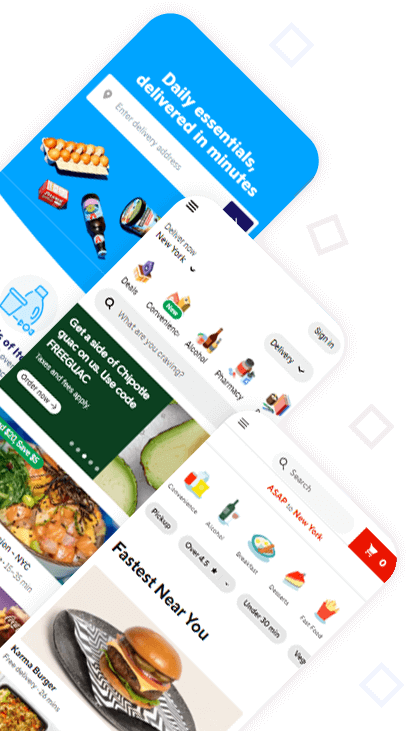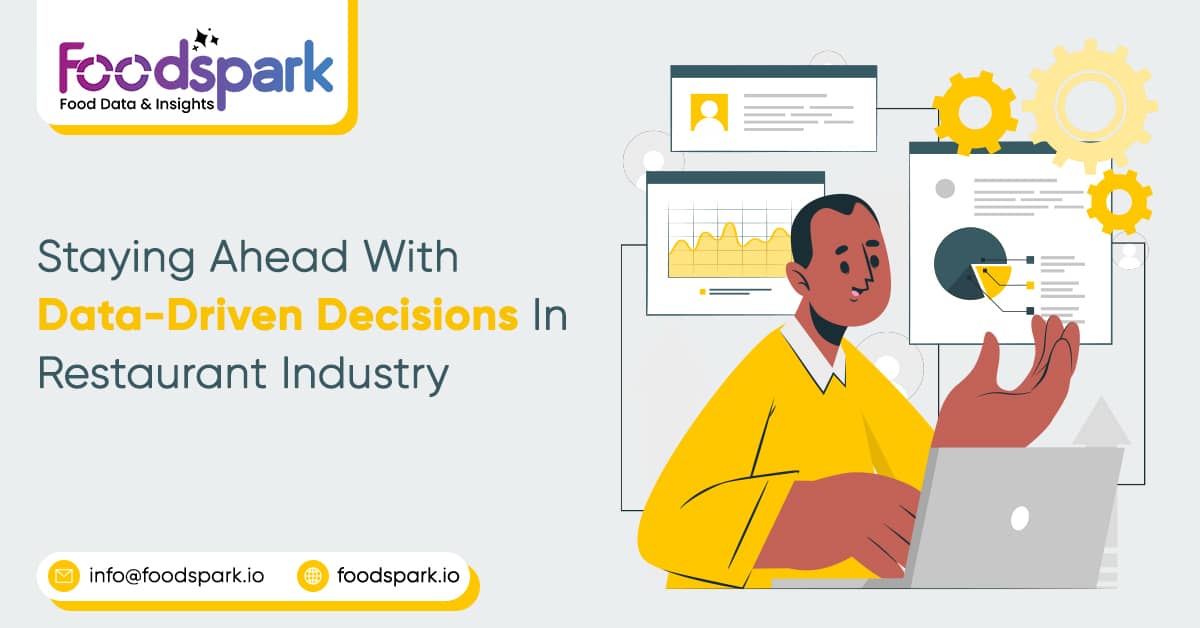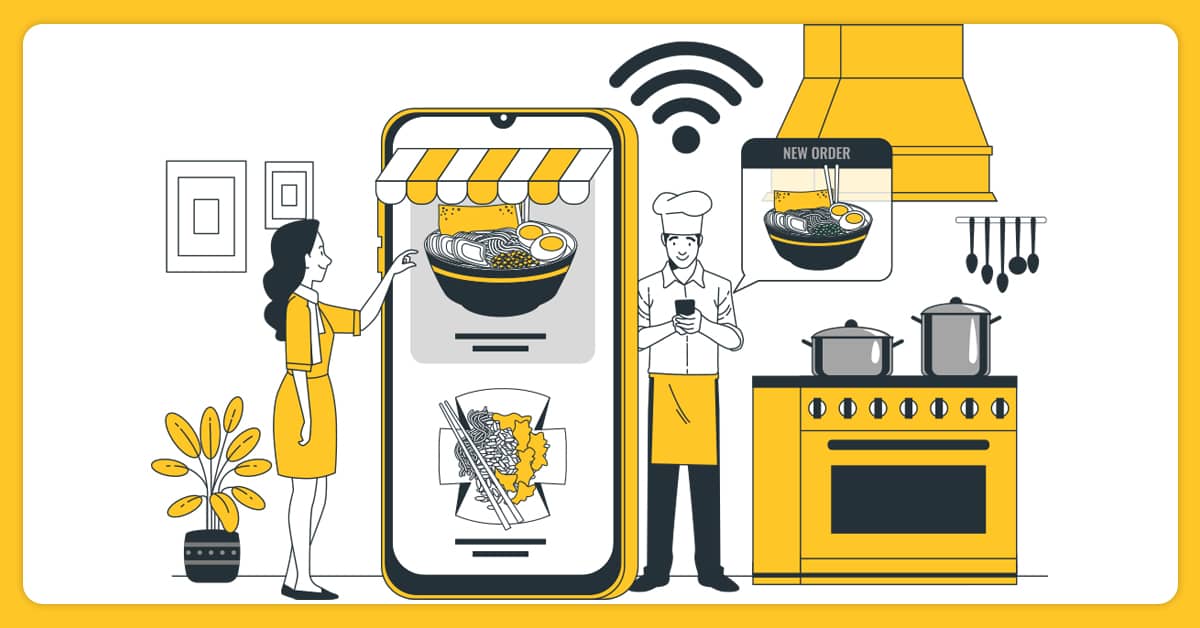Let's talk!
We'de love to hear what you are working on. Drop us a note here and we'll get back to you within 24 hours.

We'de love to hear what you are working on. Drop us a note here and we'll get back to you within 24 hours.

The world is evolving every second with new technologies. Businesses need to be flexible and understand the market trend to stay ahead. Restaurant industry saw a drastic change in the last few years. It doesn’t stick to the old set-up, i.e., a table and chair in front and the kitchen in the back. Information Technology is significant in the food industry as it creates value. Harnessing the power of data-driven decisions can make informed decisions and drive success. This blog explores the possibility of data-driven decisions for restaurant businesses. If you’re looking for a space for improvement, this blog post is for you.
Join us to learn strategies, tools, and insights that enable data-driven restaurant decisions. It empowers restaurants to stay competitive and thrive in a data-centric world. This blog will offer valuable knowledge and actionable steps to make in the long run.

The restaurant menu is the heartbeat of operations. Understanding a menu is one of the most challenging parts of the game. Restaurant analytics plays a crucial role in supporting the operational side of business. It enhances graph development and identifies places that need more attention. It showcases the efficacy of doing a profitable business in the long term.
Clarity about business is essential. Data-driven strategies must be on the top priority list while working. Consumer behavior has changed much since the pandemic. Businesses have witnessed immense possibilities and aim to be ahead of evolving trends.
A new restaurant is organized with effective strategies. These include a needs assessment, historical data, and trained staff. It offers an overview to improve your earnings. Data analytics has immense potential in the restaurant industry. It is a hub where data is collected without hassle from existing systems. Gathering Restaurant Data is easier than ever in this process. Any start-up can find an analytics platform to identify the target market and budget. Having a list of restaurants with relevant details is an asset. It allows them to gain potential clients and build strong relationships with them.
Marketing agencies gain information on lists of restaurants and reach out directly. They can offer relevant services and help increase brand awareness, driving more business to the restaurant. Restaurant Data Analytics help improve business performance. The restaurant can manage success metrics, suggesting a beneficial data set. It helps the business grow and improve customer retention, products, and services. Restaurant analytics enables you to compare the data sets, offering context for numbers. It is helpful for owners with multiple restaurants. Customers are pillars of the restaurant business. Customer feedback also adds prime value to the company. It improves service quality and areas for improvement. Data analytics helps gain customer loyalty. Loyalty programs act as a cornerstone for customer engagement.
There are various ways to access restaurant data and contact information. One of the most effective ways is to use commercial databases for business information.
Social media platforms like Facebook and Instagram can also be sources for extracting large amounts of data. Data scraping is an effective way to stay competitive in the long run. A difficulty managers face is keeping a check on a large data set. Choosing a suitable location for data might take a lot of work. While having multiple data sets is essential, it could be a complex task. Therefore, analytics and metrics are important when making decisions.
The menu is the heart of the restaurant business. In case a dish is not preferred by customers or making low sales, a thorough analysis is a must. It includes strategizing on the future menu, layouts, decor, and ambiance. Less tangible areas include employee satisfaction and morale. Restaurants need efficiency in operations to gain desired goals. These range from profitability to improvement of products and services.
Crafting menu prices is a complex but ever-evolving process considering real-world factors. You need to access production costs, competitors, and client needs. It must be noted that success metrics are not only about numbers but also about performance. Developing menu pricing strategies is a cushion for challenging times and growth instability. The more knowledge you gain about a restaurant, the better you can optimize the price. Menu pricing strategies are the primary step, but data back the best decisions.
Data is an integral part of business and explains how restaurants create value. To be competitive, restaurants must change how they approach business decisions. Based on research, there are multiple strategies and operational decisions. Restaurant analytics is a way to dine out. These insights empower customers to make informed decisions and attract new clients. Various tools such as mobile apps, kiosks and table-side tablets help owners gather data.
Restaurant businesses must understand the role of data-driven strategies. Every aspect of data, including price, design and feedback, can only be in order with data. Such metrics consist of overhead expenses, specifically food cost and labor cost measures. It enables you to create an optimal menu design. It also helps identify popular dishes, monitor ingredient costs and provide feedback. In a nutshell, data-driven strategies lead to accuracy and boost confidence. Working with clarity helps to gain insight to improve strategic thinking.
May 15, 2024 Restaurant review analysis is the process of looking through customers’ comments online. This involves expressing comments on...
Read moreMay 6, 2024 Table of Contents In 2024, the restaurant industry is in the middle of a restructuring fuelled by...
Read more